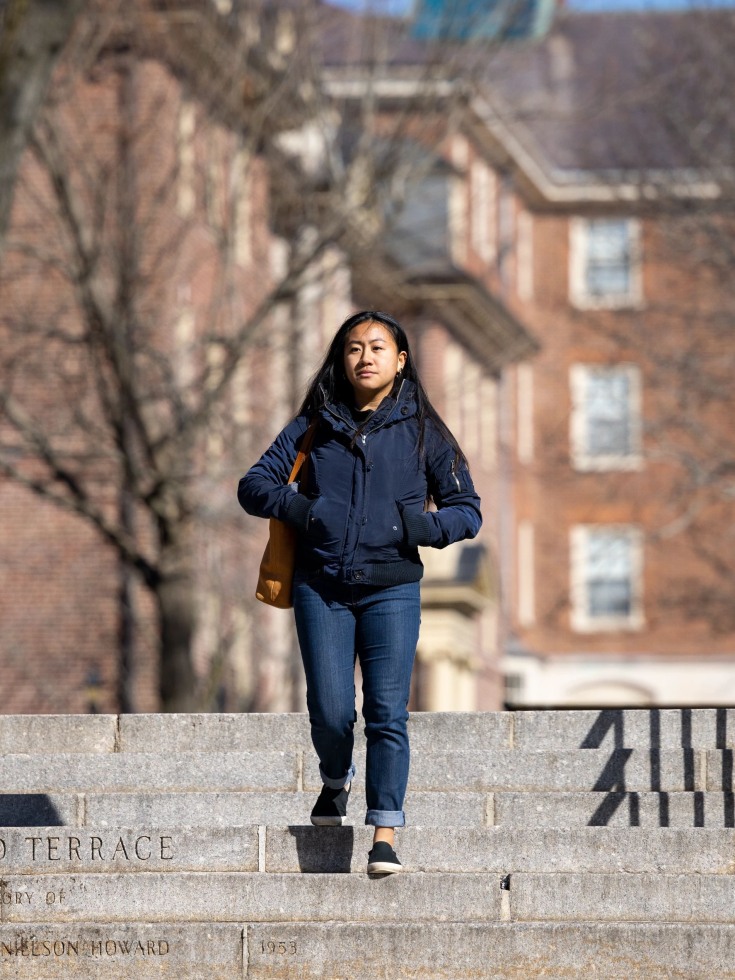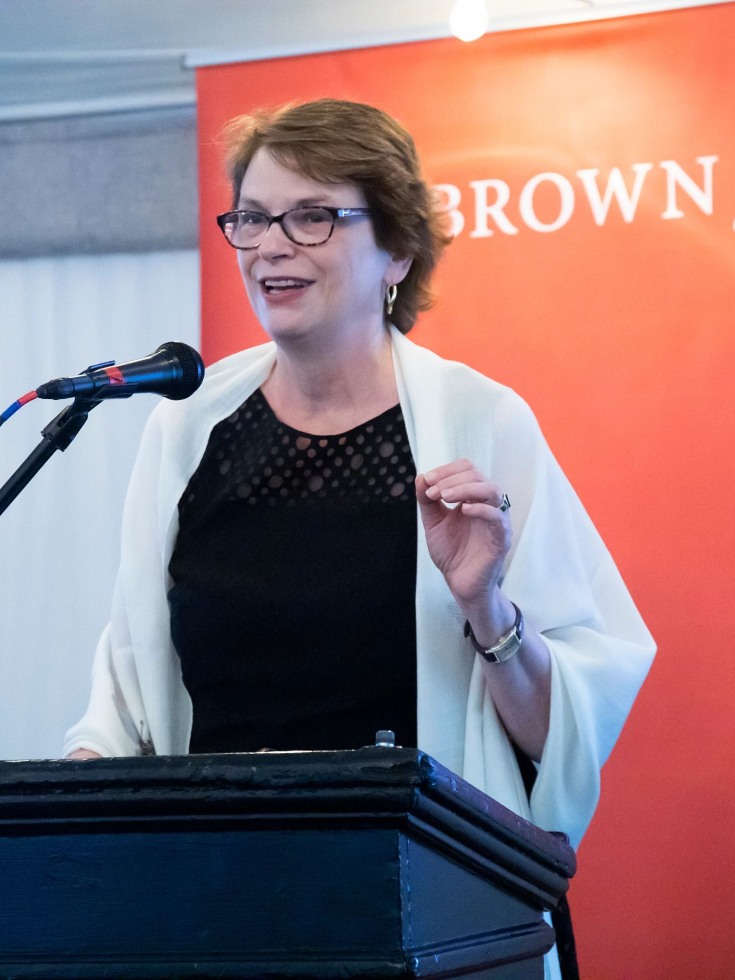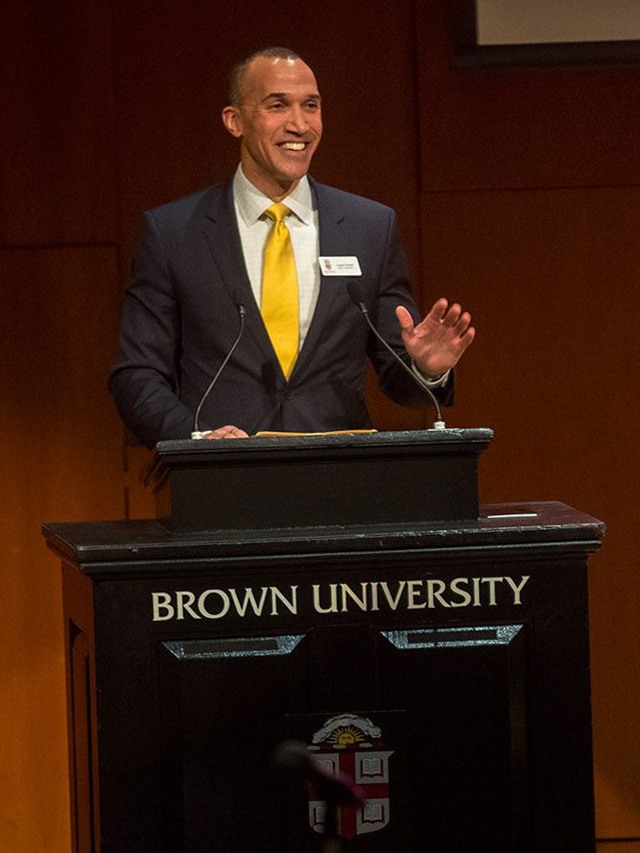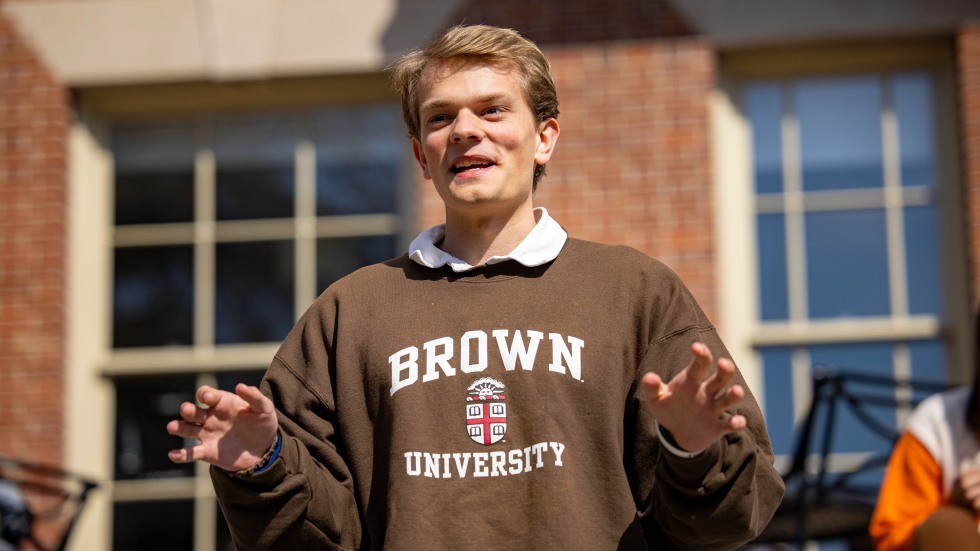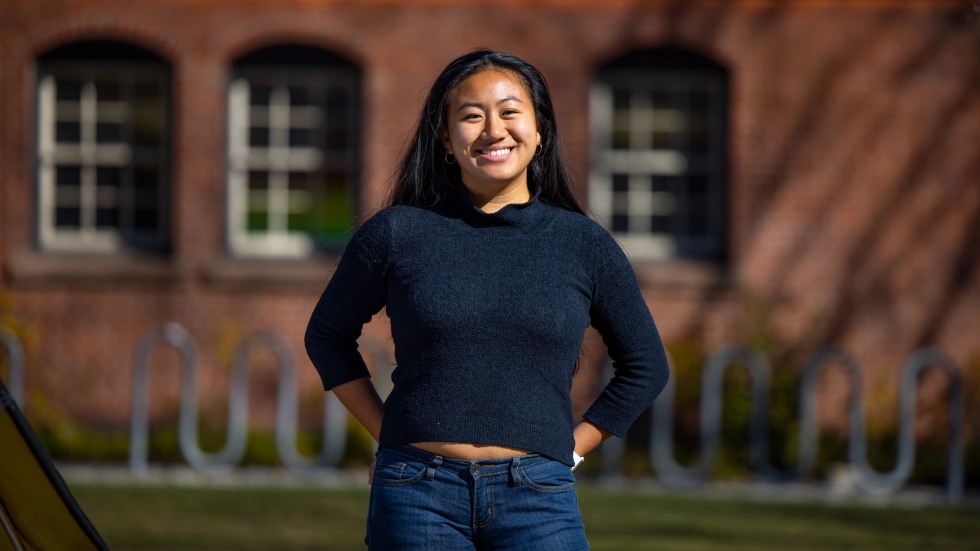PROVIDENCE, R.I. [Brown University] — In 2018-19, with $30 million in initial donor support, Brown University eliminated packaged loans from undergraduate financial aid awards, replacing them instead with scholarship funds. Now, the Brown Promise initiative has become permanent.
The continued generosity of donors enabled the University to surpass its $120 million fundraising goal this winter, fully endowing the Brown Promise and ensuring the sustainability of the financial aid initiative for generations to come. The effort is a direct response to the challenges faced by moderate-income families, who often do not qualify for the generous financial aid offered to low-income families, yet also do not have the full resources to cover the cost of attending college.
Brown President Christina H. Paxson said that with permanent funding for the Brown Promise, the University has achieved a major step toward increased access and affordability, further strengthening Brown’s commitment to welcoming and supporting talented students from the widest possible range of backgrounds.
“Making Brown an affordable choice for extraordinarily talented students from every income level is nothing short of transformational,” Paxson said. “The thousands of dedicated donors who supported the Brown Promise truly understand the importance of building a generous financial aid program for our students, who will be the next generation of leaders in our community and across the world.”
The Brown Promise is now the enduring legacy of those who contributed a wide range of gifts to ensure that financial considerations do not prevent talented students who qualify for admission from choosing Brown, Paxson added. Since its initial implementation in the 2018-19 academic year, more than 3,500 students have benefited from the Brown Promise, which has made a significant difference for families who confront difficult financial decisions and concerns about loan debt when deciding where their students should attend college.
